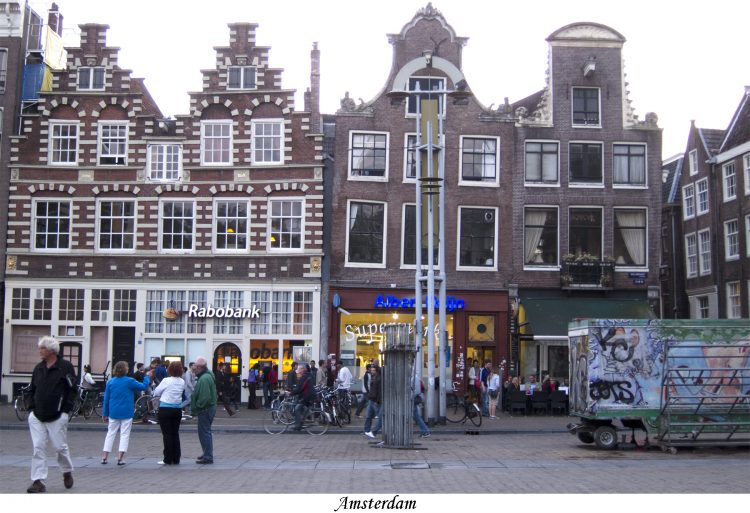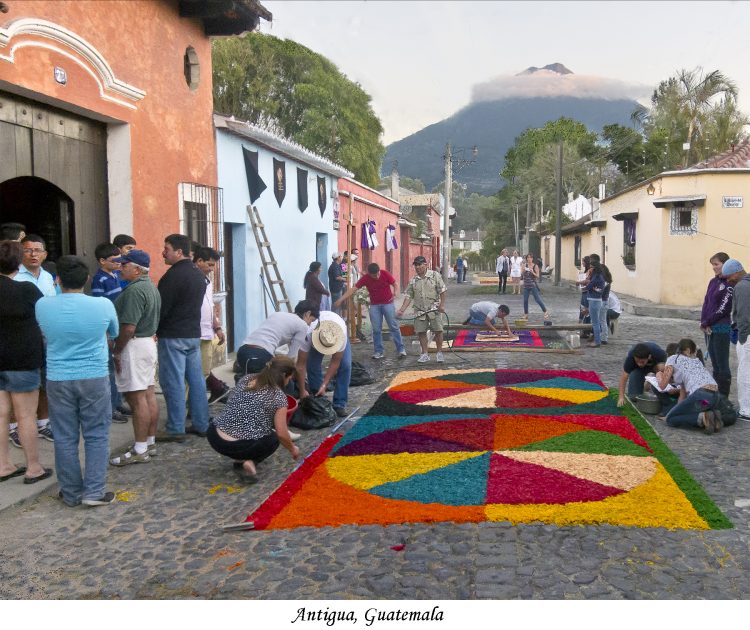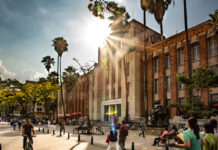I am constantly lost in a limbo: in language, culture, ethnicity, belonging, etc. I am a Medellín local surrounded (by choice) almost entirely by tourists and expats. However, I don’t have a traveling spirit (yet?) and I can’t sit here and talk to you about the life we live as expats because I haven’t had to live a lot of the struggles that expats do.
I lived in the U.S. for seven years as a Colombian, sure, but I’ve always felt very local. My parents were the ones taking care of the real issues of purchasing a home, coping with the culture shock, the new language being much harder on them, as well as all the rest of the arrangements.
However, when I picked up “At Home Abroad: Stories of Expat Life” a book of short essays about the adventures of relocating to a different country, (or several) I found myself nodding along to the experiences and feelings expressed by the authors.
“I know that feeling,” I thought.
There’s something in this book for every traveler, every expat, every tourist. I’d estimate that about half of the essays are written by retired expats over the age of 50, most of the time couples. However, some are young adults searching for their place in the world, or rather building their individual identity in every city they visit, which calls out to me directly.

At Home Abroad: About the Book
This book, published by Word Metro Press, explores the reasons behind the now well-known constant relocation of millions that leave everything behind to begin again in another country where they’ll likely have to learn new cultures, languages and start from scratch.
The book is edited by Mark and Betsy Blondin, an expat couple themselves, whose travels have been featured on HuffPost and have been documenting their trips since the mid-90s.
There are over thirty essays in the compilation, touching on moving to all sorts of places: Costa Rica, Panama, Mexico, Morocco, Turkey, Cambodia, Argentina… I could go on. Though the details of every single essay vary, each place with its own scenery, language, peculiar behaviors of its inhabitants; the experience of feeling out of place is very much the essence of these stories.
“Suddenly home is not just the place you live. Home is the piece of your soul that finds its counterpoint in the intoxication of cultural reciprocity.” –Jessica Beder

The Highs and Lows of Expat Living
The book explores, through each author’s experience, how like most ideas, moving abroad is something that sounds so much more blissful and simple than it really is. Belonging after moving abroad is something you can forget about, for anyone “too comfortable,” expat life is the solution to your problems: you will never be entirely sure again.
Every single one of these essays will guide you through the struggles and successes of life abroad: confusion, technicalities, practicality, budgeting, being a family from afar, building a family where you least expected, falling in love when overseas, everything is there.
I was especially drawn to three specific pieces: Barbara Galewska’s “A Polish Girl Who Had a Dream” really inspired me and made me feel empowered as a woman. Galewska describes her story of longing, perseverance and finally of success, every bit of which I loved; Nía Evans’ piece “Growing up in Barcelona” called to me because contrasts the parent-to-child relationship of the expat life and how expat children can see themselves in comparison to their family as they grow up. Nia’s relationship to her mother reminded me a great deal of my own, seeing my parents’ behavior and habits have roots in one land, and mine in another, thousands of miles away.
Finally, I was entranced by Taylor Bell’s “The Thousand-Year Crawl,” so perfectly written that I felt a sting of jealousy reading it. With a mention of Neruda on the second page, a less-than-luxurious life in Spain described, and some Spanish thrown in, Bell had me at page 1. However, these are just a few, all the stories were great coffee companions at least, and truly interesting.
Making a Home: “So What Changed? We did.”
One specific thought called out to me while reading these essays. Most expats that I know have expressed things they don’t understand. With confused expressions, and admittedly a little judgment, they’ve asked me about certain Colombian behaviors. “Why do Colombians always say this?” or “Why does this always happen when I do that?” and I tend to laugh, noticing these scenarios as “different” for the first time.
A lot of the authors included in this book acknowledge these thoughts of confusion, the moments of thinking things could be so much better if only…. blank. However, after some time, most realize that they grow into their environment, into the changes and the beauty of the discomfort.
Frank and Gabrielle, authors of “Expats in Cambodia” express this. At some point, these things that were confusing or different, are just…life: “So what changed? We did.”

Medellín in “At Home Abroad”
I was pleased to find our City of Eternal Spring in two of these essays, both written by authors that have been published on Medellín Living! Lisa Eldridge, from England, contributed her “Moving to Medellín” piece for the book, explaining how she didn’t ever expect to live in Colombia, retelling her journey to the city and expressing why she loves it to this day.
Ryan Hiraki, or as I like to call him Ryan the Hawaiian, former managing editor of Medellín Living wrote “Medellín” for “At Home Abroad,” a beautifully written piece that depicts the day to day life in the city, highlighting the changes it has gone through, as well as the twists that led Ryan to live here in the first place.
Seeing Medellín in these essays and identifying with all these travelers who, like myself, reside in a limbo was extremely comforting. I do recommend the book seeing as, considering the nature of Medellín Living’s content, its readers will see a lot of themselves in it. The varied nature of the authors’ style and experiences is entertaining and will possibly- I warn you- leave you wanting to write your own.
More about At Home Abroad
You can purchase At Home Abroad in paperback or digital form on Amazon, iBooks and Nook , they are also on Twitter, Facebook, and if you’re curious about more on the editors and the book itself check out the website.












Thanks for this so informative and well written post, Ximena!
I have added this book to my Amazon’s wishlist…
Can anyone help me? I am applying for a pension visa. They require some sort of confirmation from the USA that indeed this is a Social Security check coming from the US Government. Does anyone have experience as to exactly in what form this confirmation has to take?
Many thanks
david pollitt
For the United States Social Security Administration (SSA) I understand you will need the SSA Benefit Verification letter. You will need to get an apostille for this letter from the U.S. Department of State in Washington DC. The apostilled SSA Benefit Verification letter should be dated within 90 days for the visa application. The SSA Benefit Verification letter should also be translated into Spanish by an official translator. I suggest talking to a visa agency to see what else may be needed as requirements can change.
To qualify for the Colombia Retirement/Pension Visa (TP-7) you need to demonstrate retirement income of at least three times the minimum monthly salary in Colombia, which is 689,455 pesos per month in 2016. So you’ll need to show retirement income of at least 2,068,365 pesos or about $715 at the current exchange rate.
The verification letter can be easily generated by logging into your Social Security account. It’s so easy. The rest of the process for obtaining the retirement visa isn’t so easy and involves schlepping up to Bogota UNLESS either you are already in Bogota OR you hire the right lawyer like I did. I used an American named James Lindzey. Easy. He took care of the Apostille, travel to Bogota, etc. his price is reasonable and he’s done this process many times.
http://www.medellinlawyer.com/colombian-residency/
https://faq.ssa.gov/ics/support/kbanswer.asp?QuestionID=3705
Also Colombia tax laws changes I believe make that Pension 100% taxable now
I’ve read several times that pensions are indeed taxable but in reading the relevant code I saw that a foreign resident isn’t required to pay anything unless the income from all sources is over something at or near 25k. Can’t recall the exact amount but in that neighborhood.
David Pollitt – Cruising World wants to run the piece I wrote about you. Please contact me. jimcarrier@msn.com.